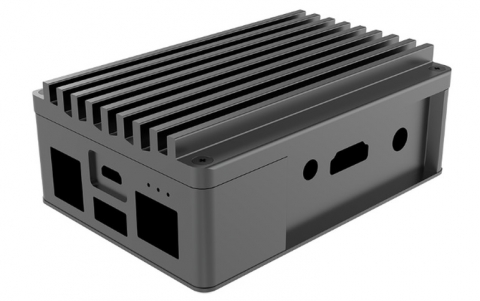
Samsung Develops New Multimedia Memory Cards for High Speed Data Transmission in Mobile Digital Applications
Samsung Electronics announced today that it has developed new memory cards that carry both Samsung flash memory and an in-house designed card controller, meeting the standard announced earlier this year by the MultiMediaCard Association (MMCA).
The new memory cards, introduced in two formats full size and reduced size under the respective brands MMCplus(TM) and MMCmobile(TM), are backward compatible with the MMC card as the conventional MMC host will configure and adjust to the new interface.
MMCplus(TM) and MMCmobile(TM) are upgraded versions of the MMC specification. The new memory cards support wider bus widths (x1, x4, x8) and a clock frequency of 52megahertz (MHz) to enable faster data transition rates. It has the industry's fastest read and write performance: 20MB per second for data read function and 15MB per second for data write speeds. The MMCmobile(TM) voltage support of 1.8V or 3.3V ensures minimum power consumption.
Samsung expects the advanced features -- small form factor, high data transition rates and low power -- to boost market acceptance of the new MMC specification as the most competitive card format for not only mobile handsets but also for almost any mobile digital device.
As multimedia data demand continues to escalate, the card controller's performance becomes a critical factor for determining transmission speed. To further speed performance, Samsung has built a 32-bit ARM7 processor into its high speed MMC controller. The data bus has been expanded to 8-bits. The host interface speed has also been improved from the 2.5MegaBytes per second (MBps) for most MMC controllers to 52MBps.
Samsung's high speed MMC controller facilitates software upgrades and modifications with a 48KiloByte (KB) Flash memory in place of the EEPROM, enhancing card compatibility. In addition, Samsung has improved the cache and interleaving algorithm for data processing, boosting the read/write speed and enhancing user convenience. The new MMC controller also takes up less space, supporting the smaller form factors of the MMCs.
Market research firm Gartner Dataquest forecasts that MMC commands the highest growth rates among solid state storage media formats through 2003 to 2008. The CAGR for unit volumes is expected to be 24 percent and sales revenue to show 37 percent growth.
MMCplus(TM) and MMCmobile(TM) are upgraded versions of the MMC specification. The new memory cards support wider bus widths (x1, x4, x8) and a clock frequency of 52megahertz (MHz) to enable faster data transition rates. It has the industry's fastest read and write performance: 20MB per second for data read function and 15MB per second for data write speeds. The MMCmobile(TM) voltage support of 1.8V or 3.3V ensures minimum power consumption.
Samsung expects the advanced features -- small form factor, high data transition rates and low power -- to boost market acceptance of the new MMC specification as the most competitive card format for not only mobile handsets but also for almost any mobile digital device.
As multimedia data demand continues to escalate, the card controller's performance becomes a critical factor for determining transmission speed. To further speed performance, Samsung has built a 32-bit ARM7 processor into its high speed MMC controller. The data bus has been expanded to 8-bits. The host interface speed has also been improved from the 2.5MegaBytes per second (MBps) for most MMC controllers to 52MBps.
Samsung's high speed MMC controller facilitates software upgrades and modifications with a 48KiloByte (KB) Flash memory in place of the EEPROM, enhancing card compatibility. In addition, Samsung has improved the cache and interleaving algorithm for data processing, boosting the read/write speed and enhancing user convenience. The new MMC controller also takes up less space, supporting the smaller form factors of the MMCs.
Market research firm Gartner Dataquest forecasts that MMC commands the highest growth rates among solid state storage media formats through 2003 to 2008. The CAGR for unit volumes is expected to be 24 percent and sales revenue to show 37 percent growth.





















